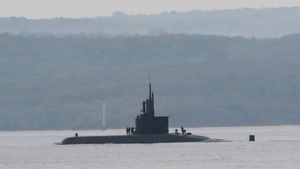YOGYAKARTA - A steel will sink in the water, but a ship made of steel will remain afloat. Surely there are other factors at play to explain this.
Archimedes' law is a clear answer that an object placed in water will have an upward force equal to the weight of the water it displaces. This upward force acts as a buoyancy as opposed to the gravitational force.
In addition, by forming the hull of the ship in such a way that when the ship sinks into the water, it will shift more liquid until a balance is reached between the mass of water being moved and the mass of the ship. This general principle applies to any object that is made of a material that is denser than its liquid.
The submarine will float because the upward lift is greater than the submarine's weight, then the submarine will float when the lift is equal to the weight of the submarine, and sink when the ship's lift is less than the submarine's weight.
Submarines can adjust the magnitude of this force by using ballast tanks, which can be filled alternately with water or air, depending on where the submarine wants to be.
SEE ALSO:
A brief explanation of why it can be adjusted because of the weight
1. When the submarine will float to the surface of the sea, the water in the ballast tank is removed and then the ballast tank is filled with air. So that the air exerts upward pressure.
2. When the submarine will dive the tank is filled with water. The air inside the ballast tank is released. This will make the pressure of the ship heavier than the pressure of the water.
The English, Chinese, Japanese, Arabic, and French versions are automatically generated by the AI. So there may still be inaccuracies in translating, please always see Indonesian as our main language. (system supported by DigitalSiber.id)













